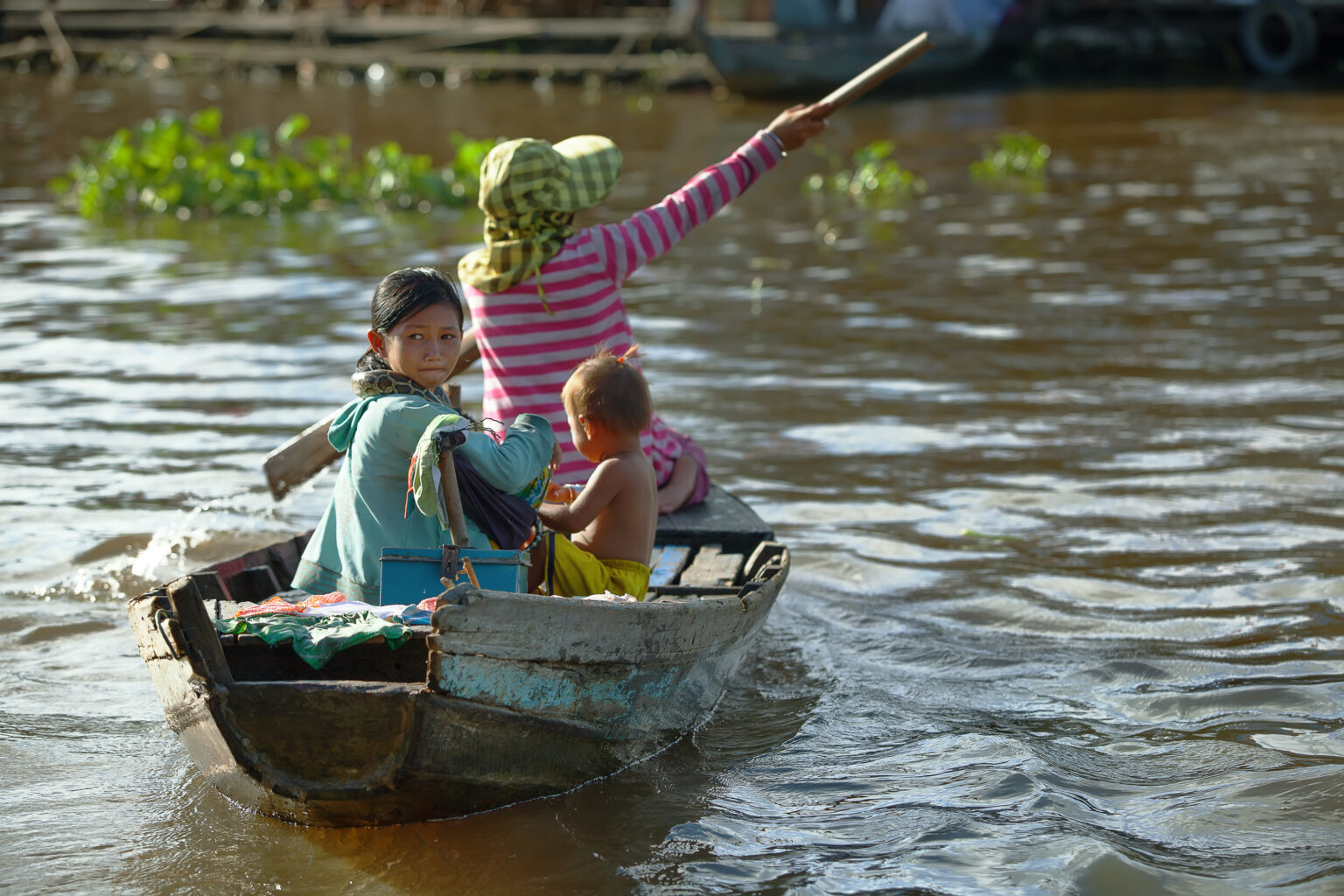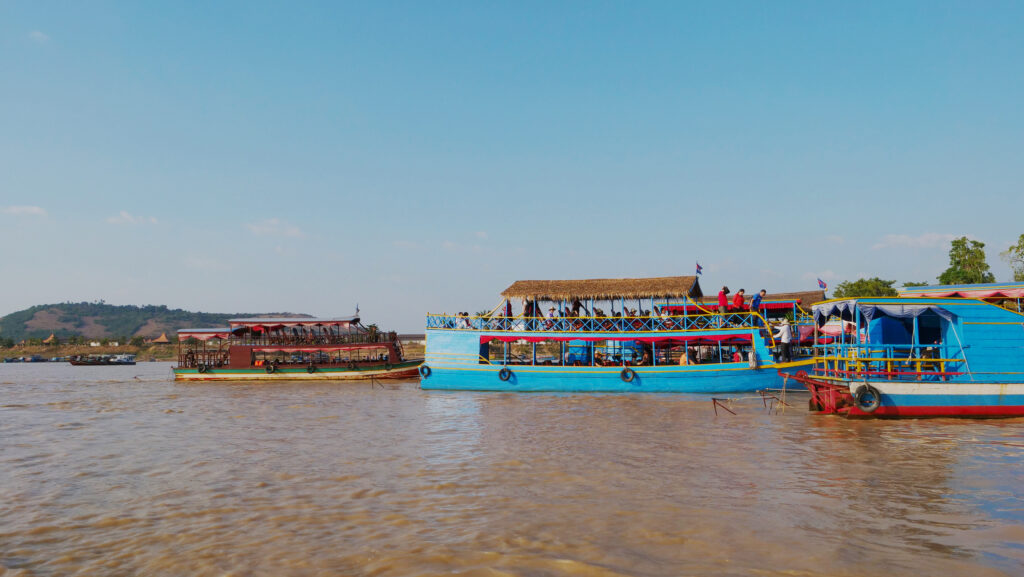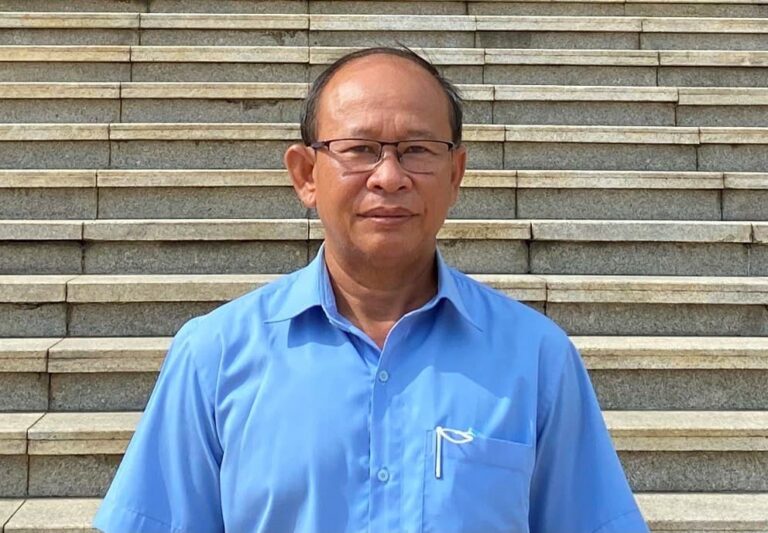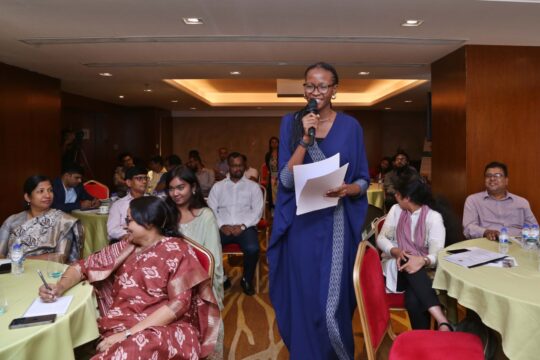
Today’s global solutions are driven by data – and disaster preparedness and response are no different. The government of Cambodia has adopted an information-based approach to disaster events. They have endorsed projects focused on collecting historical data of disasters to better understand future response and preparedness initiatives during Data Reporting Indicators of Sendai Framework for Disaster Risk Reduction in Cambodia in August 2020. The event promoted collecting disaster loss impacts and compiling them into a database for comprehensive planning and preparation.
Data acquired in the first 72 hours of a disaster frames the most specific impact of the event. The Emergency Assessment Teams (EAT) are immediate interventionists – they are on the ground when a disaster hits. EAT volunteer teams assess the impact, damage, and needs of disaster-affected communities, and coordinate disaster assessment studies in a timely and efficient manner.
The EAT’s proactive method supports capacity-building and coordination with the National Committee for Disaster Management (NCDM) and the Provincial Committee on Disaster Management (PCDM), as well as national and international organizations. Their reports provide stakeholders a better understanding of the resources needed to support affected populations.
Streaming into Action: the Formation and Expansion of EAT
The Cambodian Humanitarian Forum (CHF) has advocated strengthening the capacity of responders like the EAT. It began conducting the EAT refresher training in 2013 with support from the United States Agency for International Development Bureau of Humanitarian Assistance (USAID BHA). EAT training volunteers are members of the CHF’s network of local humanitarian and civil society organizations (CSOs). The three-day training session builds their aptitude and reviews the emergency assessment process for EAT volunteers to participate in and lead disaster assessments.
The EAT refresher training is carried out through simulated exercises of previous flood events in Cambodia. Participants form groups to collect information and conduct interviews with disaster-affected populations. They utilize key informant (KI) interviews and focus group discussions (FGD) tools to gather information with a focus on vulnerable groups such as women, children, and the elderly. Their evaluation catalogs support that is available to communities and whether such support is adequate to address the community’s needs. Ultimately, the assessment seeks to evaluate post-disaster effects on the relevant sectors to better understand them better in preparation for future disaster events. The pool of trained volunteers has contributed to assessment team efforts organized by the Humanitarian Response Forum (HRF) and NCDM during the flood damage assessment in provinces around the Tonle Sap Lake in 2013 and droughts of 2016.
The success of assessment carried out during the floods expanded the emergency assessment work to specifically evaluate these disaster events. Floods are the most common disasters in Cambodia with a risk index of 9.5 out of 10. HRF is a network of disaster response teams that were formed as a collaborative effort between the United Nations (UN) and international humanitarian organizations for disaster relief. It has been instrumental in improving disaster response efforts including EAT. The forum provided the framework for key lessons for flood-related assessments with lesson plans and material. These contents were published in a manner that would allow trained participants to replicate these lessons.
Creating a synchronized response community starts with stakeholder cooperation. It has led to the combined efforts of the HRF and CHF to engage non-governmental organizations (NGO) and national governments authorities in disaster response. Future implementation of EAT training has evolved from the distinct inputs from these stakeholders. The 2015 CHF Lessons Learnt Workshop presented these achievements, findings, and gaps for more comprehensive EAT training. It has also engaged facilitators in the development of a concept note for the training that would ensure EAT accountability and ownership in the context of resilience, preparedness, and response.
Teams on Sight – Coordinated and Comprehensive Assessment
The Asian Preparedness Partnership (APP) believes that local actors are a key contributor to disaster preparedness and emergency response. The national preparedness partnership, the Preparedness Partnership of Cambodia (PPC), approached the CHF to jointly facilitate the EAT refresher training in 2017. The partnership brought together relevant stakeholders for training and a more integrated response effort. It has contributed technical assistance to ensure that these trainings take place every year. In addition, 43 local non-governmental organizations (LNGOs) from the partnership’s network have joined the training in the last three years. PPC has also provided the support needed to advance collaborations between the NCDM and CHF through the annual disaster emergency assessment lessons on victims’ damage and needs. The partnership has also ensured that quality standards for disaster risk monitoring are maintained to administer the training effectively.

The APP executive capacity-building initiatives with inclusivity of all relevant stakeholders. With this vision, the PPC’s engagement in EAT brought together actors from the government and LNGO sector. Stakeholder engagement under a common platform promotes shared learning experiences and connects participants for concerted efforts to enhance humanitarian coordination in Cambodia. PPC has included the in-Country Emergency Rapid Assessment Team (ERAT) in the refresher training. The in-country ERAT are 15 individuals who were selected to be trained by the Association for Southeast Asian Nations – Emergency Response and Assessment Team (ASEAN-ERAT). The ERAT in Cambodia is part of a network of 200 members across 10 ASEAN member states. The team is comprised of persons from National Disaster Management Offices (NDMOs) and government authorities such as the PCDM and NCDM as well as civil society, Red Cross and Red Crescent Societies, the private sector, and academia. These government agencies were a part of the emergency assessment courses provided by the ASEAN Coordinating Centre for Humanitarian Assistance on disaster management (AHA). The previous EAT of various participants enriched the overall comprehension of emergency assessment. The ERAT and EAT teams reflected on their familiarity with such assessments insights from the ASEAN and PCC interventions respectively.
Multistakeholder participation and engagement underline the importance of EAT at the regional and national levels. ERAT has been a part of the refresher workshop since 2019. 11 ERAT members from the NCDM and PCDM and 23 representatives from LNGOs attended the session that year. Joint participation has promoted their coordinated efforts with the PCDM and NCDM for EAT assessments in disaster events. The course will focus on enhancing the capacity of EAT and ERAT teams by incorporating the lessons learned and experiences from the recent flood events, and how these teams can work closely and effectively in the future. Coordinated action plans and assessments have become increasingly essential as 80% of territories in Cambodia are covered by the Mekong River and Tonle Sap Basins.

Staying in the Current
Life flows into Cambodia through the Mekong river- it brings identity and a sense of continuity across the country. ‘Me’ translates to Main and ‘Kong’ comes from the kongkear which means water in Khmer. A rightful name as the Mekong mainstream accounts for 30% of inland waterways and the Mekong basin provides 18% of Cambodia’s GDP and is a larger contributor to the economy than rice.
What holds life in such a delicate balance can also bring destruction. When the Mekong floods it leaves millions on scraps of land surrounded by rising water levels. Tropical storms and heavy rainfall led to widespread flooding across 19 provinces of Cambodia in October 2020. The floods have affected 800,000 people of which 388,000 were particularly vulnerable. The disaster events have damaged more than 160,000 households, with 14,300 evacuated to safe, informal, or evacuation centers.
The Asian Disaster Preparedness Center (ADPC) and PPC closely monitored the flood situations with the NDCM and HRF who were leading the rapid assessments. The EAT refresher training participants were able to join these efforts; 13 attendees of the refresher training supported the assessments across six provinces between 19-21 October 2021. The results and key findings were presented to the HRF with assessment reports that document the data. With the support of the United Nations Office for the Coordination of Humanitarian Affairs (UNOCHA), the HRF has incorporated this data into the joint project proposal.
EAT efforts during floods in communities across Cambodia have largely contributed to assessment reports to create national change in disaster response and policies. While facts and figures have made uncovered solutions to global challenges, it is active responders like the EAT who view disaster events as a scope to cultivate knowledge that reduces impact numbers during imminent assessments.
Quotes from EAT Participants




